Homaging the best and brightest of 1980s cinema is central to the framework of Stranger Things. The Duffer Brothers made this clear in season one of their Netflix series, and since then have stacked the deck with shoutouts and parallels to a ridiculously large assortment of media. Many of these references are tidy and easy to sync up—here, a reference to Tremors. There, a passing glimpse of E.T. the Extraterrestrial. Over there, it’s Stand By Me. But there is one particular aspect of the show that seems to have bloomed in the most recent season: a steady reinvention of the 1980s sci-fi and fantasy heroines that we all know and love.
[Spoilers for Stranger Things Season 2.]
On the genre side of 80s pop culture, films and media tended to revolve around two types of female characters. I will call them the Woman/Girl Something Happens To and the Woman/Girl Who Refuses to Let Something Happen to Her. It may seem like an oversimplification, but it’s a clear delineation that makes all the difference in how a female character is portrayed. The first types are often girlfriends and sisters, women who stumble into the plot and can’t seem to make their way out of it. The second type is more often a maternal figure with someone or something to protect, a woman who has to grab hold of the situation with both hands and wrestle to the floor. Here are a few handy examples:
Woman/Girl Something Happens To: Kate in Gremlins; Andy and Stef in The Goonies; Jennifer in the Back to the Future Trilogy; Willie Scott in Indiana Jones and the Temple of Doom; the Childlike Empress in The Neverending Story; Rachel in Blade Runner; Vicky Vale in Batman.
Woman/Girl Who Refuses to Let Something Happen to Her: Ellen Ripley in the Alien series; Sarah Connor in The Terminator series; Sarah Williams in Labyrinth; Leia Organa in the Star Wars saga; Marion Ravenwood in Raiders of the Lost Ark; Diane Freeling in Poltergeist.
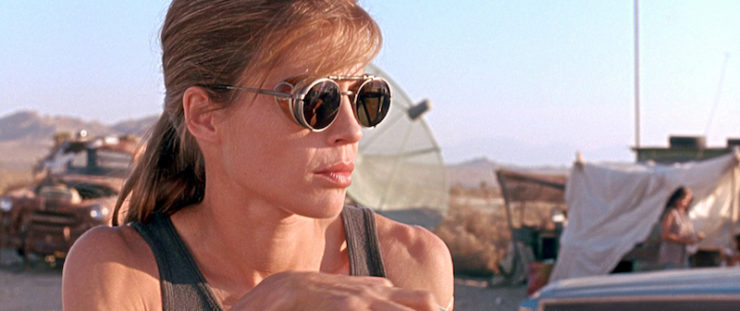
It is important to note that the most successful versions of “Woman Who Refuses” typically involve a journey from one end of this spectrum to the other—the woman (or girl) begins by allowing things to happen, then gets so fed up with the status quo that she does everything she can to break that cycle. This is particularly true for Sarah Connor, for Ellen Ripley, for Diane Freeling and Sarah Williams. These arcs are successful because they resonate in a more realistic manner, highlighting the concept of coming into one’s power. They create a model for others and that model has carried forward into much of the media we see today.
What’s disappointing about the “Woman Who Refuses” trope is the fact that these characters are often maternal figures, or have to become maternal figures in order to recognize that power. Ripley starts off fighting for her own survival, but becomes a surrogate mother to Newt in Aliens, Sarah Connor’s entire journey centers around the fact that her future son will lead an important resistance that she has to prepare him for, Diane Freeling is trying to save her daughter from a supernatural threat, even Sarah Williams’s journey takes on a maternal sheen as she takes responsibility for her infant half-brother’s well-being. While motherhood is a wonderful thing, and there’s nothing wrong with discovering strength in it, its portrayal being so common reads as though women can only discover strength through maternal bonds.

Enter Stranger Things.
Stranger Things solidifies and mutates this 80s pop culture trend by stacking their deck with Ripleys and Sarah Connors. In fact, the only girl in the whole story who could easily be labeled a “Girl Something Happens To” is Barb Holland, whose demise serves as the forward momentum for all of Nancy Wheeler’s actions in the second season of the show. In fact, by killing Barb off—an action that was rightly met with upset and anger from the Stranger Things fandom when her death was not meaningfully addressed in season one—the show is making it clear that it has no room at all for women and girls who let things happen. This universe only has room for the ones who are determined to create their own destinies, who are going to pick up the Big Gun or the mecha suit or a string of Christmas lights taped to the wall and do something.
This is particularly fascinating because there are actually a few men and boys in the Stranger Things narrative who are permitted passivity without sacrificing their place in the story. Will Byers is perpetually stuck in this role, forever the kid who is trapped or possessed or unconscious, and desperate to be free of that burden. His brother Jonathan often requires a push from others to get going, and generally prefers to remain in the background of things. Murray Bauman, the journalist-turned-conpiracy-theorist, eventually is run out of town by Sheriff Hopper, only to be lucky enough to have the story he was searching for dumped into his lap by Nancy and Jonathan. Steve Harrington spends a good portion of the second season waiting for others to drag him into the action, and only finds his footing again while playing babysitter to Mike, Dustin, and Lucas. The rules are different for men here, as they often are in fiction; more nuance, more choices, more ups and downs that come from always being the default perspective and existing in greater numbers.
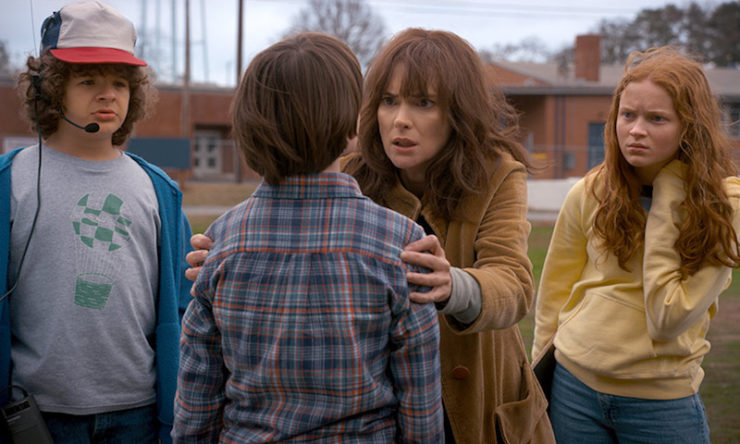
For the women of Stranger Things, their struggles confirm their existence in the story, and their choice to fight against those struggles determine their continued role in it. Joyce Byers spends the entire first season in the throes of deep paranoia and terror, trying to reach her son in a parallel reality where he is being held captive. By the second season, she has her son back and is clearly suffering from the events of the previous season, constantly fretting over Will’s whereabouts and health. When it seems that Joyce’s role in the story is waning, the shock provided by a strange shadow on Will’s video recording of Halloween launches her back into that same frenetic energy that carried her through the first season. From that point on, Joyce has purpose—to free her son from the tendrils of the Upside Down. She nearly kills Will in an effort to separate the shadow from his body, but when Jonathan tries to stop her, she insists that he step aside. Joyce Byers is at her most interesting and effective when she’s consumed by that single-minded focus.
At first glance, this reads as a rehash of everything that 80s genre films already did because Joyce is a mother. Her determination to keep Will safe is very much like Sarah Connor’s nerve, Ripley’s resolve, Diane Freeling’s stubbornness. Joyce is driven by that maternal sense of purpose, one that she extends to Eleven in the first season as well. But these journeys play out differently for other women in the story who do not occupy that maternal space. Nancy Wheeler spends the second season of the show obsessed with getting justice for her dead friend. She stops caring about her popular jock boyfriend, her schoolwork, the thoughts of her classmates, and dedicates herself to finding a way to make certain that Barb’s parents can have some form of closure. Nancy’s competence continues to be drilled home even after she and Jonathan have taken their story to Murray Bauman. When everyone has gathered at the Byers residence to help Will, and Sheriff Hopper is handing out guns to defend themselves against an army of demogorgons, he offers a rifle to Jonathan, who balks at the idea of using a firearm. Nancy, clearly aggravated that she was not considered, tells Hopper that she can handle the gun and proceeds to use it effectively. Barb’s death is ultimately what turns Nancy into a “Girl Who Refuses,” the loss of a friend rather than the need to fight on behalf of a child.
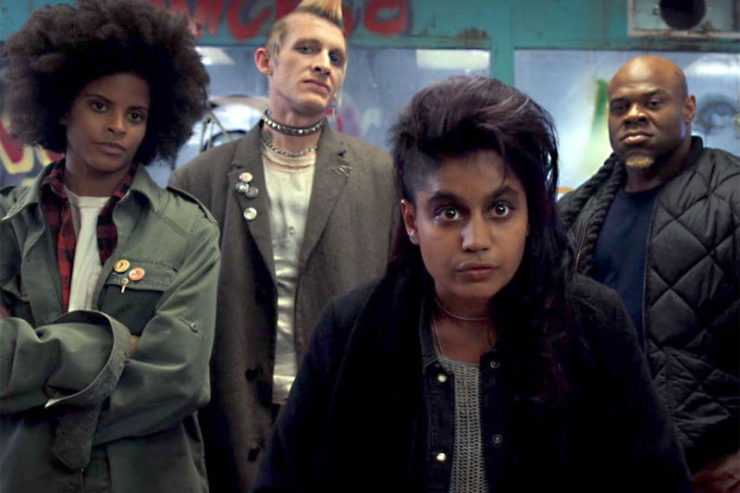
The introduction of Kali (or Eight, as she was called in Hawkins Lab) serves as another example of a woman asserting her power, in this case by enacting her own form of vigilante justice. Kali and her crew spend their time hunting down people who have done them wrong and eliminating them one by one. Moreover, her decision to act violently toward people who have been violent to others is not one that the narrative condemns her for. In fact, when Eleven prevents her from killing a man who tortured them both in Hawkins Lab, Kali tells Eleven: “If you wanted to show mercy, that’s your choice. But don’t you ever take away mine. Ever.” While she appreciates the choices that others make, she will not bend to anyone else’s opinion on the matter. She also coaches Eleven to use her own powers more effectively, which helps set her “sister” on her own road. Kali’s decision to live outside society’s acceptable bubble is part of what gives her power, and she does it on behalf of herself and her found family.
Maxine’s journey is one of self-protection. Coming from a household with a step-father and step-brother who are both abusive and erratic, Max’s prime concern is carving out a safe place for herself in Hawkins, Indiana. It begins by attempting to join “the party,” as the show’s D&D-playing core group like to call themselves. The boys handle this attempt horribly across the board; Lucas and Dustin both have crushes on Max, but are unwilling to go against Mike’s wishes and tell her everything that happened to them last year, Mike is grieving Eleven (whom he believes to be dead), and treats Max as an interloper who is attempting to take the “girl spot” in their group. None of the boys come out looking good as they constantly shut Max out over and over. Eventually Lucas breaks the silence and tells her everything, despite the pile-on he gets from Dustin and Mike for breaking their rules. Max is finally a member of a group of friends, which she desperately needs. But it’s not until she sticks her step-brother Billy with a sedative and threatens him with a nail-filled baseball bat that she finally gains control of her life. It’s finally her turn to take charge, stealing her brother’s car and driving the boys (and an unconscious Steve) to the tunnels so they can help Eleven in her final task.

Eleven herself has the hardest path to walk, one mired with abusive paternal figures. Her time in Hawkins Lab at the hands of Martin Brenner (whom she is told to call ‘Papa’) sees her as the focus of a set of experiments surrounding her telekinesis. The first season focuses on her escape and discovery of a group of friends when she bonds with “the party.” Eleven appears to die saving her friends, but reemerges from the Upside Down to be found by Sheriff Hopper… who essentially imprisons her again. While it is understandable that Hopper wants to keep her safe, his strict rules surrounding her movements are still ultimately cruel, and his inability to handle her upset at being confined like a prisoner is even worse. Eleven learns that her mother is still alive and makes the choice to run away, finding her mother first, and then Kali. While she enjoys the time she gets to spend with her lab sister, a sense of responsibility to her friends back in Hawkins leads to her return, and Kali’s training helps her to seal the gate to the Upside Down. Realizing her own strength and making the choice to come back gives Eleven more say in her life, and makes her the most important force in the show’s narrative.
Just like the greatest 80s heroines before them, all of these women start from a place of inaction. They begin as the one Something Happens To, and slowly start refusing those circumstances to become agents of their own fate. And perhaps most importantly, they don’t all have to be in a position of maternal protection to become these heroes. Watching them correct their own courses and demand to be seen and heard is a part of what makes Stranger Things compelling, despite its reliance on nostalgia and familiar themes.
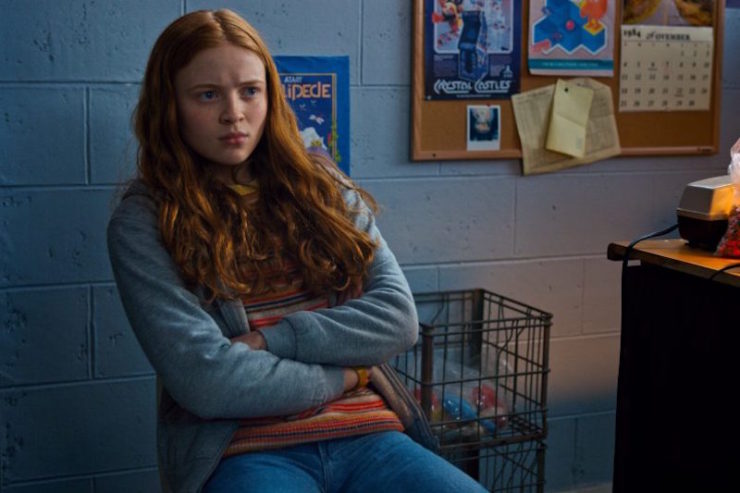
While it isn’t necessarily fair to insist that every single one of your central female characters take on challenges with such gusto, it does address the narrative choices that created many of the SFF heroes that women know and love to this day. And perhaps by creating so many for their universe, fans of Stranger Things can learn something new about the place of Woman With a Big Gun in our pop culture zeitgeist. Though she began as a very particular type in cinema, there is no reason to rehash one particular female viewpoint over and over to the exclusion of others. We must keep examining our Ripleys, our Sarahs, and our Leias in order to do better, and the simplest way to do that is by eschewing rote conceptions of “toughness” and “strength” and asking what everyday occurrences prompt people to fight back, to stand up for others and for themselves. If Stranger Things continues to ask those questions carefully, then all of its female characters will contribute to that cultural conversation.
Emmet Asher-Perrin liked the second season of Stranger Things much better than the first, in fact. You can bug her on Twitter and Tumblr, and read more of her work here and elsewhere.










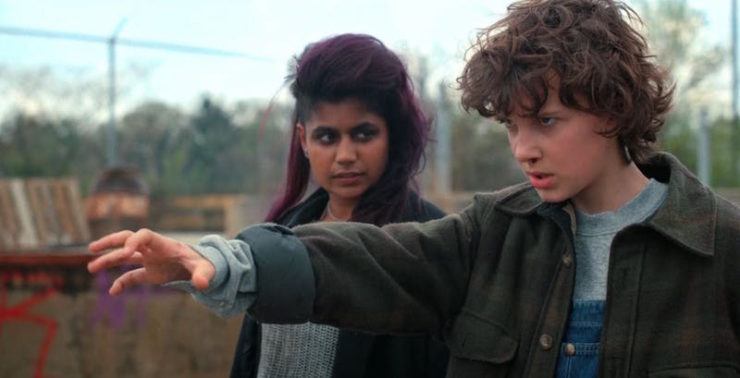
Philosophically they’re interesting too. No-one’s a fatalist here–or if they are, they don’t last long. Kali is such an existentialist I half-expected her to be chilling out in that abandoned warehouse with a volume of Sartre.
I just hope we don’t have to see Mrs. Wheeler decide to have a fling with Billy in order to show her becoming an agent of her own fate and propelling her husband into action. I can do without that trope.
Ripley saved her cat. If you can differentiate the love between two friends (Barbara and Nacy) then you can differentiate the love between a pet and a human. No need to consider her a mother-figure. Not until Alien Ressurrection at least.
@3: You may be neglecting the second movie in the franchise.
@2: Have to agree. Mr Wheeler’s always been a cartoonish joke but I had a lot of sympathy for Mrs Wheeler in the first season and would like to see her done a bit more justice. Instead we kind of just see she’s unhappy throughout the season and leave it at that.
Maj. Motoko Kusanagi is, I think, a great example of an 80s heroine that manages embody the toughness the author talks about.
I have to say, reading your thoughtful, insightful reviews is such a revelation of each piece of media you dissect. My experience with the work feels validated but also improved each time. Your passion and in-depth thoughts make me want to watch Season 2 all over again.
Great analysis. I’m rewatching the series for the 4th or 5th time (don’t judge me!) and one of the biggest things I’m afraid of for S3 is the other typical girl trope that likes to surface in these kinds of stories: the girl rivals or There Can Be Only One. S2 set up Eleven as jealous of Max (reasonably so, given her estrangement from her friends) but I hope it is something that develops into a real friendship. Girls need other girls and I think it would be unhealthy to focus all the weight of Eleven’s development on her adolescent relationship with Mike, no matter how sweet it is.